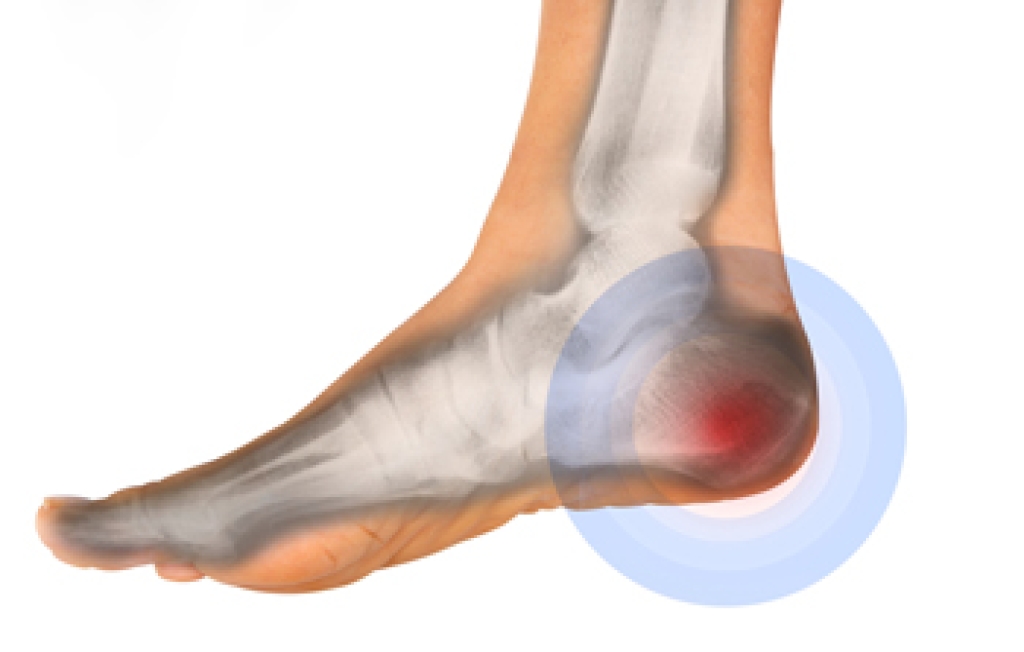Connect With Us
Blog
Blog
When to Choose Surgery for Hammertoe

Surgery to correct hammertoe is often considered when the condition causes persistent pain, stiffness, or deformity that interferes with walking. A hammertoe occurs when the middle joint of a toe bends downward, often affecting the second toe. One common surgical method is phalangeal head resection, in which part of the bone at the joint is removed so the toe can lie flat. Tendons are released and repositioned to match the corrected alignment, and the toe is held in place with a wire or tape while it heals. In some cases, an implant may be used to replace the removed bone segment. Following hammertoe surgery, special shoes are usually required, and full recovery time varies depending on healing. Risks can include infection, swelling, numbness, and stiffness in the toe. A podiatrist can evaluate the severity of the deformity and recommend surgery, when necessary. If you are considering surgery for hammertoe, it is suggested that you schedule an appointment with a podiatrist for expert advice and guidance.
Hammertoe
Hammertoes can be a painful condition to live with. For more information, contact Pedram Aslmand, DPM from Advanced Foot and Ankle Center. Our podiatrist will answer any of your foot- and ankle-related questions.
Hammertoe is a foot deformity that affects the joints of the second, third, fourth, or fifth toes of your feet. It is a painful foot condition in which these toes curl and arch up, which can often lead to pain when wearing footwear.
Symptoms
- Pain in the affected toes
- Development of corns or calluses due to friction
- Inflammation
- Redness
- Contracture of the toes
Causes
Genetics – People who are genetically predisposed to hammertoe are often more susceptible
Arthritis – Because arthritis affects the joints in your toes, further deformities stemming from arthritis can occur
Trauma – Direct trauma to the toes could potentially lead to hammertoe
Ill-fitting shoes – Undue pressure on the front of the toes from ill-fitting shoes can potentially lead to the development of hammertoe
Treatment
Orthotics – Custom made inserts can be used to help relieve pressure placed on the toes and therefore relieve some of the pain associated with it
Medications – Oral medications such as anti-inflammatories or NSAIDs could be used to treat the pain and inflammation hammertoes causes. Injections of corticosteroids are also sometimes used
Surgery – In more severe cases where the hammertoes have become more rigid, foot surgery is a potential option
If you have any questions, please feel free to contact our offices located in Long Beach, CA . We offer the newest diagnostic and treatment technologies for all your foot care needs.
Causes and Symptoms of Bursitis in the Heel

Heel bursitis occurs when the small fluid-filled sac, known as the retrocalcaneal bursa, becomes irritated and inflamed at the back of the heel where the Achilles tendon meets the heel bone. This irritation can develop from repetitive activities that increase pressure in that area, including running uphill, jumping, or standing on tiptoes. Wearing high heels frequently, ill-fitting shoes that rub against the heel, or flip-flops that provide little protection may also contribute to heel bursitis. Tight calf muscles or an existing bone spur can further aggravate the bursa. Symptoms include swelling, tenderness, and a painful lump at the back of the heel, which worsens when shoes press on the area or when engaging in activities that put stress on the Achilles tendon. A podiatrist can evaluate the heel and provide the most effective treatment. If you experience symptoms of bursitis in the heel, it is suggested that you schedule an appointment with a podiatrist for an exam and appropriate treatment.
Many people suffer from bouts of heel pain. For more information, contact Pedram Aslmand, DPM of Advanced Foot and Ankle Center. Our podiatrist can provide the care you need to keep you pain-free and on your feet.
Causes of Heel Pain
Heel pain is often associated with plantar fasciitis. The plantar fascia is a band of tissues that extends along the bottom of the foot. A rip or tear in this ligament can cause inflammation of the tissue.
Achilles tendonitis is another cause of heel pain. Inflammation of the Achilles tendon will cause pain from fractures and muscle tearing. Lack of flexibility is also another symptom.
Heel spurs are another cause of pain. When the tissues of the plantar fascia undergo a great deal of stress, it can lead to ligament separation from the heel bone, causing heel spurs.
Why Might Heel Pain Occur?
- Wearing ill-fitting shoes
- Wearing non-supportive shoes
- Weight change
- Excessive running
Treatments
Heel pain should be treated as soon as possible for immediate results. Keeping your feet in a stress-free environment will help. If you suffer from Achilles tendonitis or plantar fasciitis, applying ice will reduce the swelling. Stretching before an exercise like running will help the muscles. Using all these tips will help make heel pain a condition of the past.
If you have any questions, please feel free to contact our offices located in Long Beach, CA . We offer the newest diagnostic and treatment technologies for all your foot care needs.
Causes of Black Toenails

A black toenail may appear alarming, and its causes can range from minor to more serious conditions. Repetitive trauma, such as pressure from shoes that do not fit properly, can cause bleeding beneath the toenail, which leads to dark discoloration. A blunt injury, like dropping a heavy object on the foot, can also damage the nail bed and cause blood to pool under the nail. Fungal infections may contribute as well, where debris buildup can turn the nail dark instead of the typical yellow or white. In some cases, pigmentation changes or underlying health conditions like diabetes, anemia, or heart disease can be factors. A podiatrist can identify the exact cause, provide treatment to address pain, infection, or nail damage, and determine if further testing is needed. If your toenail turns black in color, it is suggested that you schedule an appointment with a podiatrist for an exam and appropriate treatment.
Toe pain can disrupt your daily activities. If you have any concerns, contact Pedram Aslmand, DPM of Advanced Foot and Ankle Center. Our podiatrist can provide the care you need to keep you pain-free and on your feet.
What Causes Toe Pain?
Most severe toe pain is caused due to a sports injury, trauma from dropping something heavy on the toe, or bumping into something rigid. Other problems can develop over time for various reasons.
Toe pain can be caused by one or more ailments. The most common include:
- Trauma
- Sports injury
- Wearing shoes that are too tight
- Arthritis
- Gout
- Corns and calluses
- Hammertoe
- Bunions
- Blisters
- Ingrown toenails
- Sprains
- Fractures (broken bones)
- Dislocations
When to See a Podiatrist
- Severe pain
- Persistent pain that lasts more than a week
- Signs of infection
- Continued swelling
- Pain that prevents walking
Diagnosis
In many cases the cause of toe pain is obvious, but in others, a podiatrist may want to use more advanced methods to determine the problem. These can range from simple visual inspections and sensation tests to X-rays and MRI scans. Prior medical history, family medical history, and any recent physical traumatic events will all be taken into consideration for a proper diagnosis.
Treatment
Treatments for toe pain and injuries vary and may include shoe inserts, padding, taping, medicines, injections, and in some cases, surgery. If you believe that you have broken a toe, please see a podiatrist as soon as possible.
If you have any questions please contact our offices located in Long Beach, CA . We offer the newest diagnostic and treatment technologies for all your foot and ankle needs.
Ankle Injuries Common in Basketball

Basketball places heavy demands on the feet and ankles, making these areas particularly vulnerable to injury. The constant jumping, pivoting, and sudden directional changes often lead to ankle sprains, fractures, and tendon problems. A sprain occurs when the ligaments that stabilize the ankle are stretched or torn, often from landing on another player’s foot. Stress fractures may also develop from repeated impact, affecting bones like the talus or navicular in the ankle. High ankle sprains, which involve the ligaments that connect the tibia and fibula, are less common but typically more severe, requiring longer recovery. A podiatrist can evaluate the extent of the basketball-related injury, provide effective treatment, and determine if surgery is necessary to restore stability and function. If you have sustained an ankle injury, it is suggested that you make an appointment with a podiatrist for an exam and treatment.
Sports related foot and ankle injuries require proper treatment before players can go back to their regular routines. For more information, contact Pedram Aslmand, DPM of Advanced Foot and Ankle Center. Our podiatrist can provide the care you need to keep you pain-free and on your feet.
Sports Related Foot and Ankle Injuries
Foot and ankle injuries are a common occurrence when it comes to athletes of any sport. While many athletes dismiss the initial aches and pains, the truth is that ignoring potential foot and ankle injuries can lead to serious problems. As athletes continue to place pressure and strain the area further, a mild injury can turn into something as serious as a rupture and may lead to a permanent disability. There are many factors that contribute to sports related foot and ankle injuries, which include failure to warm up properly, not providing support or wearing bad footwear. Common injuries and conditions athletes face, including:
- Plantar Fasciitis
- Achilles Tendinitis
- Achilles Tendon Rupture
- Ankle Sprains
Sports related injuries are commonly treated using the RICE method. This includes rest, applying ice to the injured area, compression and elevating the ankle. More serious sprains and injuries may require surgery, which could include arthroscopic and reconstructive surgery. Rehabilitation and therapy may also be required in order to get any recovering athlete to become fully functional again. Any unusual aches and pains an athlete sustains must be evaluated by a licensed, reputable medical professional.
If you have any questions please contact our offices located in Long Beach, CA . We offer the newest diagnostic and treatment technologies for all your foot and ankle needs.
Blog Archives
- 2025
- 2024
- 2023


